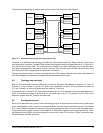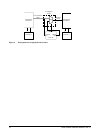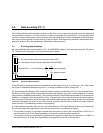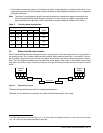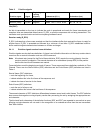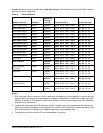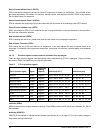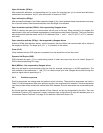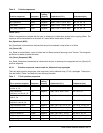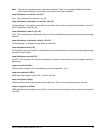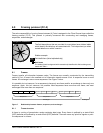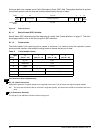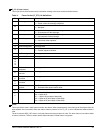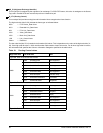
Fibre Channel Interface Manual, Rev. D 19
Open full-duplex (OPNyx)
After successful arbitration, the transmitting port (x) opens the receiving port (y) for control and data frame
transmission and reception. Any FC port can transmit or receive an OPN.
Open half-duplex (OPNyy)
After successful arbitration, the initiator opens the target (y) for control and data frame transmission and recep-
tion of control frames. Data frame transmission from the target is not allowed.
Open broadcast replicate (OPNfr)—Not supported by Seagate drives
OPNfr is used by the open port to communicate with all ports in the loop. When received by the targets (the
opened ports), they are not allowed to generate any transmission words (except fill words). They must replicate
and retransmit all received words until a CLS is detected. Both ‘ f ’ and ‘ r ’ are FFh (D31.7 in FC-1 transmis-
sion code).
Open selective replicate (OPNyr)—Not supported by Seagate drives
Similar to OPNfr (see definition above), with the exception that the initiator can communicate with a subset of
the targets on the loop. The target at AL_PA ‘ y ’ is a member of the subset.
Close (CLS)
Close indicates that the CLS originator is prepared to or has ended the current loop circuit.
Dynamic Half Duplex (DHD)
DHD indicates the open L_Port is relinquishing control of when the current loop circuit is closed. Support of
DHD is discovered during Port Login.
Mark (MRKtx)—Not supported by Seagate drives
Mark may be used for synchronization within the loop (for example, spindle sync in a RAID application). The
third character of the ordered set ‘ t ’ (MK_TP) is a vendor-unique sync code. Seagate drives pass through this
primitive signal without responding to it.
5.4.2 Primitive sequences
Primitive sequences are ordered sets that perform control functions. These primitive sequences are listed in
Table 6. Primitive sequences differ from primitive signals in the requirement for detection. Primitive sequences
must have at least three consecutive ordered sets to be detected. Primitive sequences are transmitted repeat-
edly.
All of these primitive sequences are defined in Fibre Channel, but are not recognized by the drive. The Loop
Initialization Primitive (LIP) sequence is used in arbitrated loop configurations to reset all attached ports to a
known state. Refer to Section 8.2 on page 35 for additional information about LIPs.



